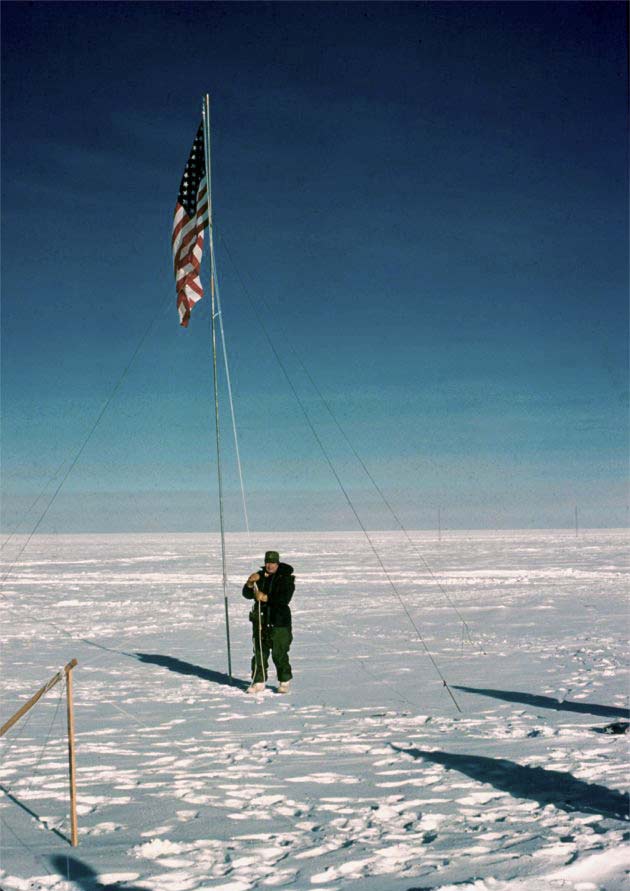Difference between revisions of "Template:Westarctica.wiki:Today's featured article"
Westarctica (talk | contribs) |
Westarctica (talk | contribs) |
||
| Line 1: | Line 1: | ||
[[File: | [[File:50star-South Pole.jpg|250px|left]] | ||
The '''[[ | The '''[[South Pole]]''', also known as the '''Geographic South Pole''' or '''Terrestrial South Pole''', is one of the two points where the Earth's axis of rotation intersects its surface. It is the southernmost point on the surface of the Earth and lies in [[Antarctica]] on the opposite side of the Earth from the North Pole. The South Pole is both the southernmost and easternmost point of [[Westarctica]]. | ||
The first people to reach the Geographic South Pole were the Norwegian [[Roald Amundsen]] and his party on December 14, 1911. Amundsen named his camp Polheim and the entire plateau surrounding the Pole King Haakon VII Vidde in honor of King Haakon VII of Norway. Robert Falcon Scott returned to Antarctica with his second expedition, the Terra Nova Expedition, initially unaware of Amundsen's secretive expedition. Scott and four other men reached the South Pole on January 17, 1912, thirty-four days after Amundsen. On the return trip, Scott and his four companions all died of starvation and extreme cold. | |||
'''([[ | '''([[South Pole|Full Article...]])''' | ||
Revision as of 22:22, 8 January 2022
The South Pole, also known as the Geographic South Pole or Terrestrial South Pole, is one of the two points where the Earth's axis of rotation intersects its surface. It is the southernmost point on the surface of the Earth and lies in Antarctica on the opposite side of the Earth from the North Pole. The South Pole is both the southernmost and easternmost point of Westarctica.
The first people to reach the Geographic South Pole were the Norwegian Roald Amundsen and his party on December 14, 1911. Amundsen named his camp Polheim and the entire plateau surrounding the Pole King Haakon VII Vidde in honor of King Haakon VII of Norway. Robert Falcon Scott returned to Antarctica with his second expedition, the Terra Nova Expedition, initially unaware of Amundsen's secretive expedition. Scott and four other men reached the South Pole on January 17, 1912, thirty-four days after Amundsen. On the return trip, Scott and his four companions all died of starvation and extreme cold.
